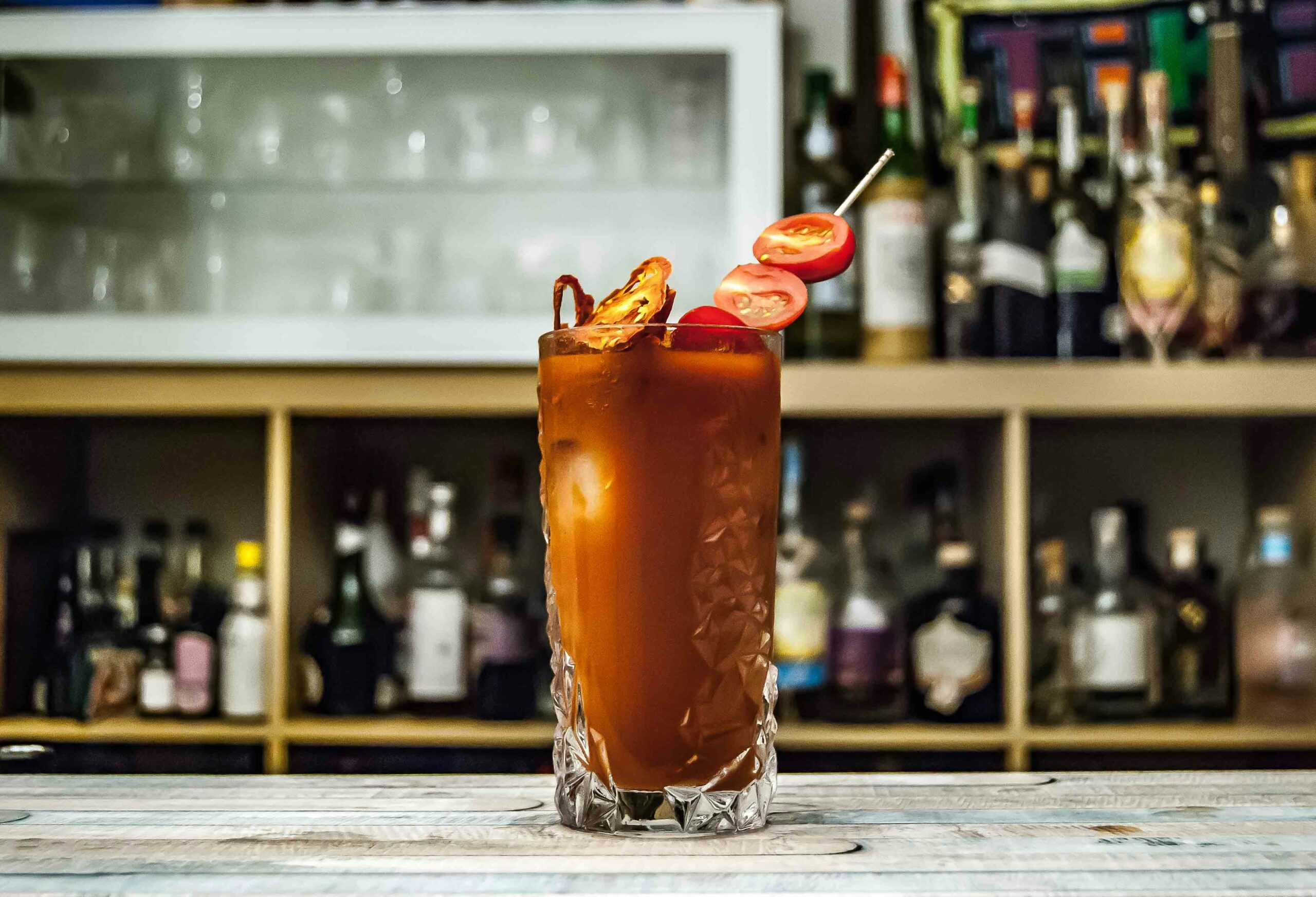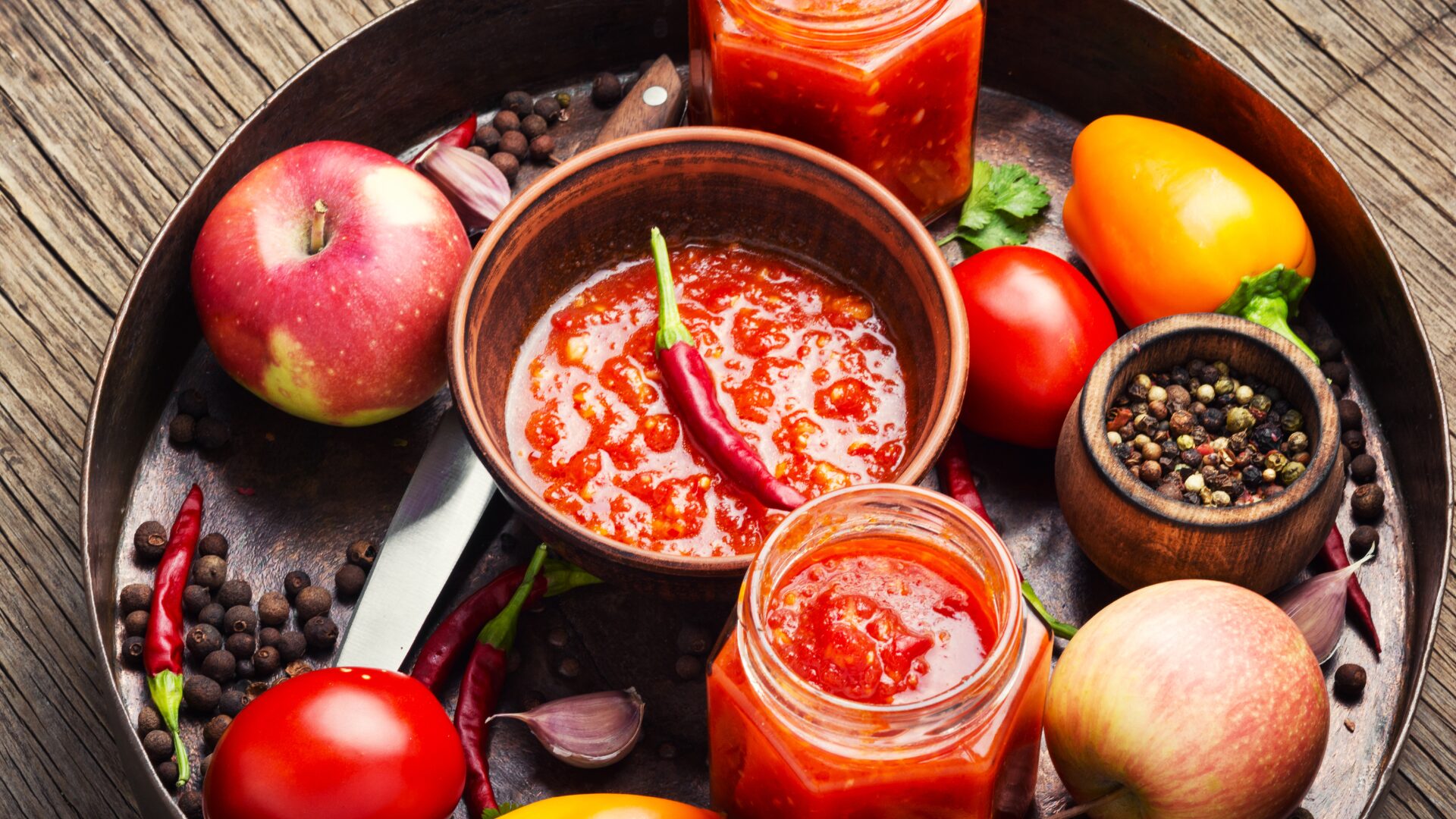This summer, many chefs, operators, and consumers are looking for the next wild condiment to garnish their plates, spread across their breads and crackers, and slather upon meat, poultry, and fish.
Condiment season – if you will – got off to a red-hot start when renowned chef David Chang sought to trademark Momofuku’s version of chile crunch. Over almost as quickly as it started, the blowback was intense, immediate, and overwhelming as fans, critics, and more cried foul about appropriating a common flavor profile for many Southeast Asian flavors and cuisines.
Before the pandemic, it was (and maybe still is?) Huy Fong’s ubiquitous sriracha sauce. Accept no substitutes.
Last year, hot honey made the rounds as a must-have addition to pizza, salads, and more.
Is this the year for ajvar?
Can Ajvar Break Through?
Ajvar (eye-var) is a relish that became popular after World War II and remains so in Southeast Europe. Yugoslavian in provenance, ajvar is made primarily from sweet bell peppers and eggplants, and many homemade ajvars are made from roasted peppers.
Depending upon the amount of heat in the peppers (capsaicin, to hot-heads, most familiar as the active and spicy ingredient in jalapenos), ajvar can be sweet (traditional), piquant (common), or scorching hot. Ajvar can be spread on bread or enjoyed as a side dish due to its thicker and more viscous texture.
Like many condiments, ajvar can merely function as the vehicle for many different flavors, aromas, and textures, and feature ingredients from tomato to oregano, green peppers, serranos, and more.
But will we see it much this summer?
“People with Mediterranean backgrounds know and love ajvar,” said Melissa Clemente, creative and marketing director at Wildfare.
“It is a treasured heritage recipe. We want to introduce it to the American household as the ultimate culinary multitasker. It’s a sauce. It’s a spread. It’s a dip. It does it all – deliciously,” she told The Food Institute.
Clemente said the burgeoning global flavors movement can only help a condiment like ajvar. The “kitchen table traveler” may not be able to visit every country on the globe to experience its cuisine firsthand, but the joy, challenge, and excitement of learning about and working with new flavors can easily be replicated in the home or restaurant.
“Condiments are especially attractive because they are so versatile and easy to use,” she added, pointing to popular ajvar-affected dishes such as grilled red snapper, “where Cinco de Mayo meets the Mediterranean.”
Like many flavors to sweep the market, the growth of ajvar is slow but steady.
“Ajvar has grown by roughly 19% in social discussion over the past year,” said Braden Douglas, Crew Marketing.
“While that growth may appear significant, the actual number of people discussing ajvar is still relatively minuscule. Ajvar is just not gaining prominence in menus or recipes at any serious rate.”
Douglas said that ajvar needs a few significant moments in the spotlight, such as being featured on cooking shows, endorsed by top-tier celebrity influencers, or to simply be utilized in an intriguing manner by a culturally popular brand.
When asked what other condiments mimic the slow appearance of something like ajvar in the market, Douglas likened it to Japanese mayo.
“Japanese mayo was once fairly unheard of and only found in specialty stores,” he mused, “and now it’s easily accessible and familiar to consumers.”
Then he offered one more parting thought, which the FI staff took to heart:
“Perhaps by way of this article, ajvar will begin its climb to greatness.”
If it should, we’ll be happy to take credit.
The Food Institute Podcast
How are foodservice consumers contending with persistent inflation? Are they eating more at home, for example, or continuing to treat themselves at their favorite restaurants? The latest episode of The Food Institute Podcast examines that topic with Krystle Mobayeni of BentoBox, who dissected rapidly evolving consumer dining dynamics.











